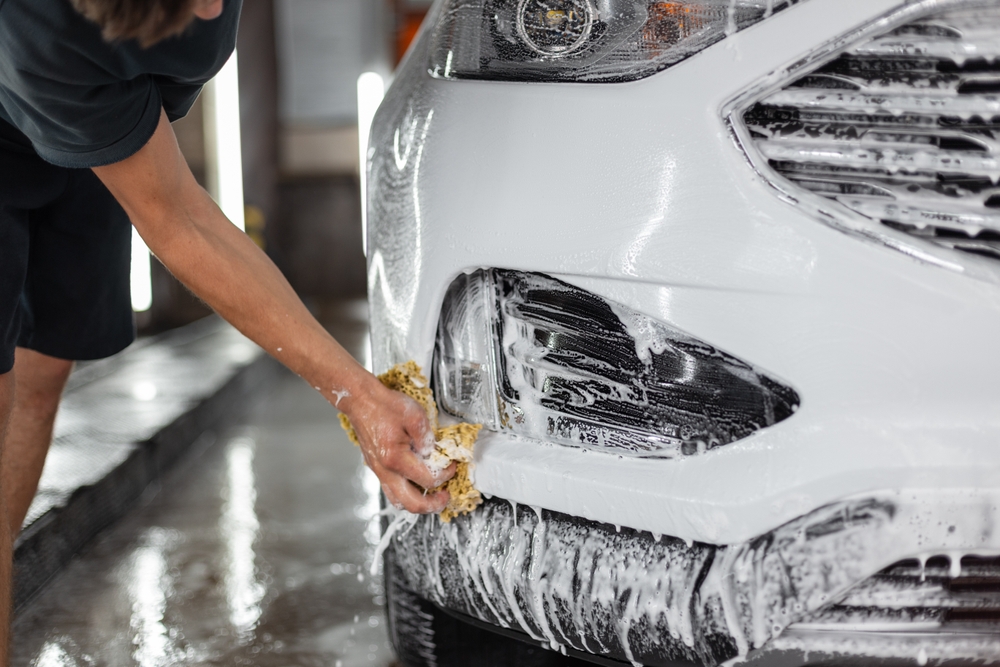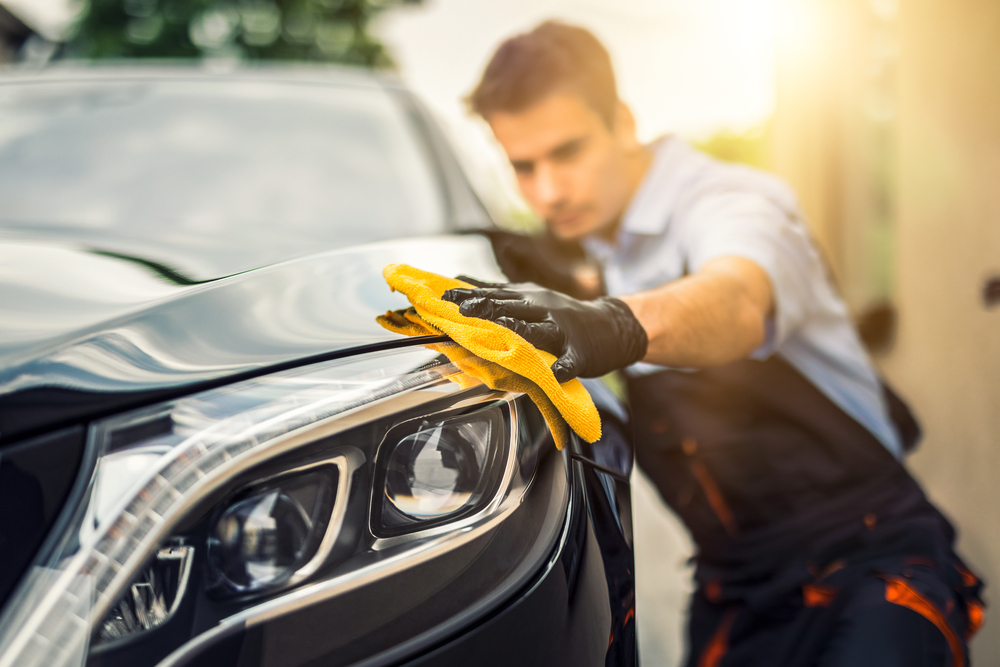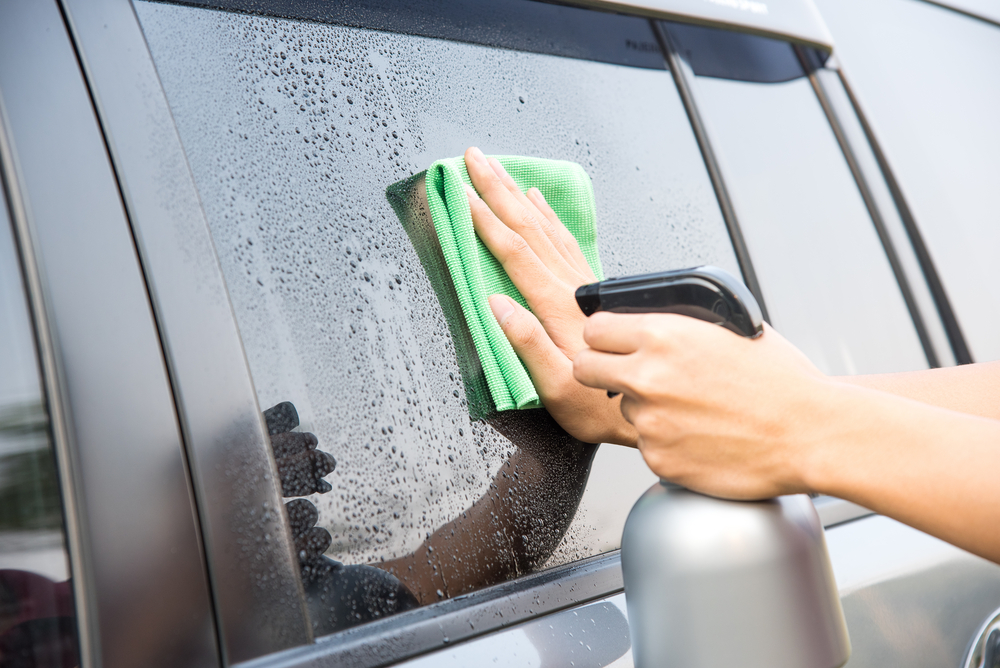Winter weather can be tough on your car, with snow, salt, and dirt causing wear and tear on both the exterior and interior. Protecting your vehicle during the colder months is essential to keep it looking great and running smoothly. In this article, we’ve rounded up 20 essential car detailing tips that will help preserve your paint and interior, ensuring your car stays in top condition all winter long.
Contents
Regularly Wash Your Car

Salt, grime, and road debris accumulate quickly in winter, so regular washing helps remove contaminants that could cause paint damage. Use a pH-balanced shampoo to protect the clear coat and avoid stripping away protective layers.
Apply a High-Quality Wax

Waxing provides a protective layer that guards against harsh winter elements, preventing road salt and grime from sticking to the paint. Opt for a long-lasting synthetic or carnauba wax to ensure the protection lasts through the season.
Use a Ceramic Coating

A ceramic coating provides an even stronger layer of protection, making the surface hydrophobic (water-repellent). It helps protect against road salt, grime, and other contaminants while maintaining the car’s glossy appearance.
Seal Paint with a Paint Protection Film (PPF)

PPF is a clear, durable film applied to your car’s exterior to protect against chips, scratches, and road debris. It’s particularly effective in winter when ice, salt, and debris are more likely to cause damage to the paint.
Clean Wheel Wells and Tires

Winter road conditions often lead to mud, salt, and grime accumulating in wheel wells. Clean these areas thoroughly to avoid rust buildup. Use a brush and degreaser to remove stuck-on debris and spray with a protective tire dressing.
Use a Tire Protection Spray

Apply a protective spray on your tires to maintain their appearance and prevent cracking from cold temperatures. Some sprays also provide anti-ozonants, which protect against wear and damage caused by UV exposure.
Rinse Underneath the Car

Salt and grime build up underneath the car, which can lead to rust over time. Use a hose to rinse the undercarriage regularly, especially after driving on salted roads, to keep it clean and free from harmful residues.
Avoid Washing Your Car in Extreme Cold

Washing your car in freezing temperatures can lead to water freezing on the surface and doors getting stuck. Wait for a warmer day or use a heated garage for washing to avoid complications.
Use a Microfiber Cloth for Drying

Microfiber towels are highly absorbent and gentle on paint, preventing swirl marks and scratches while drying your car. Always use a clean, dry microfiber cloth to gently pat the surface dry instead of dragging it across the paint.
Protect Your Windshield with Rain Repellent

Applying a rain-repellent coating to your windshield improves visibility during winter storms and helps water slide off more easily. This reduces the need to constantly use windshield wipers, preserving their life.
Clean Your Car’s Interior Regularly

Mud, snow, and salt get tracked into your car, which can cause stains and damage to the upholstery. Vacuum and wipe down your interior regularly, especially the floor mats, seats, and any exposed surfaces.
Protect Leather Seats with Conditioner

Cold temperatures can dry out leather, making it more prone to cracking. Use a leather conditioner to keep seats soft, supple, and protected from the drying effects of winter. Look for conditioners with UV protection to prevent sun damage when driving.
Use Floor Mats to Protect Carpets

Floor mats help protect your car’s carpeting from snow, salt, and dirt that can accumulate in the winter months. Rubber or all-weather mats are ideal, as they are easy to clean and durable enough to withstand winter’s harsh conditions.
Use a Dehumidifier for Interior Moisture Control

Winter can cause condensation inside your car, leading to foggy windows and potential mold buildup. A portable car dehumidifier helps keep the interior dry by absorbing excess moisture, preventing moisture-related issues.
Apply an Anti-Fog Solution to Windows

Cold, wet conditions can cause fogging on the inside of your car windows. Use an anti-fog solution to keep the glass clear and improve visibility. Some solutions even help prevent frost buildup on the inside of your windshield.
Check and Replace Wiper Blades

Cold temperatures can cause wiper blades to stiffen, crack, or break. Replace worn-out wiper blades before winter, and ensure they are in good condition to handle snow, ice, and slush.
Clean and Treat Your Car’s Roof

Snow and ice buildup on your car’s roof can slide down and block your windshield or cause scratches. Clean your roof after snowstorms and apply a protective coating to help prevent buildup and damage.
Use a Snow Brush and Ice Scraper

Invest in a good-quality snow brush and ice scraper with a sturdy handle to prevent scratches when removing snow and ice from the car’s surface. Always start from the top and work your way down to avoid scratching the paint.
Store Your Car in a Garage or Covered Area

If possible, keep your car in a garage or covered parking area during the winter months. This helps protect it from snow, ice, and temperature extremes, reducing the risk of rust and fading paint.
Lubricate Door Seals and Locks

Cold weather can cause door seals and locks to freeze, making it hard to open your car. Use a silicone-based lubricant on rubber seals and locks to ensure they stay flexible and prevent freezing.
This article originally appeared in MyCarMakesNoise.
More from MyCarMakesNoise
18 Motorcycles You Didn`t Know Had Incredible Performance

When it comes to motorcycles, some of the best rides often fly under the radar. In this list, we’re highlighting 18 underrated motorcycles with surprising performance that deserve more recognition. Read More
18 Performance Cars That Made No Effort to Be Fuel-Efficient

When it comes to performance cars, speed and power often take center stage, while fuel efficiency falls by the wayside. Some of the most thrilling cars on the market today are notorious for their fuel-guzzling engines, prioritizing horsepower and acceleration over gas mileage. Read More
8 Revolutionary Personal Mobility Devices That Could Transform Urban Living

Urban living is constantly evolving, and so are the ways we move through our cities. Personal mobility devices are becoming more advanced, offering innovative solutions for efficient, eco-friendly transportation. Read More














